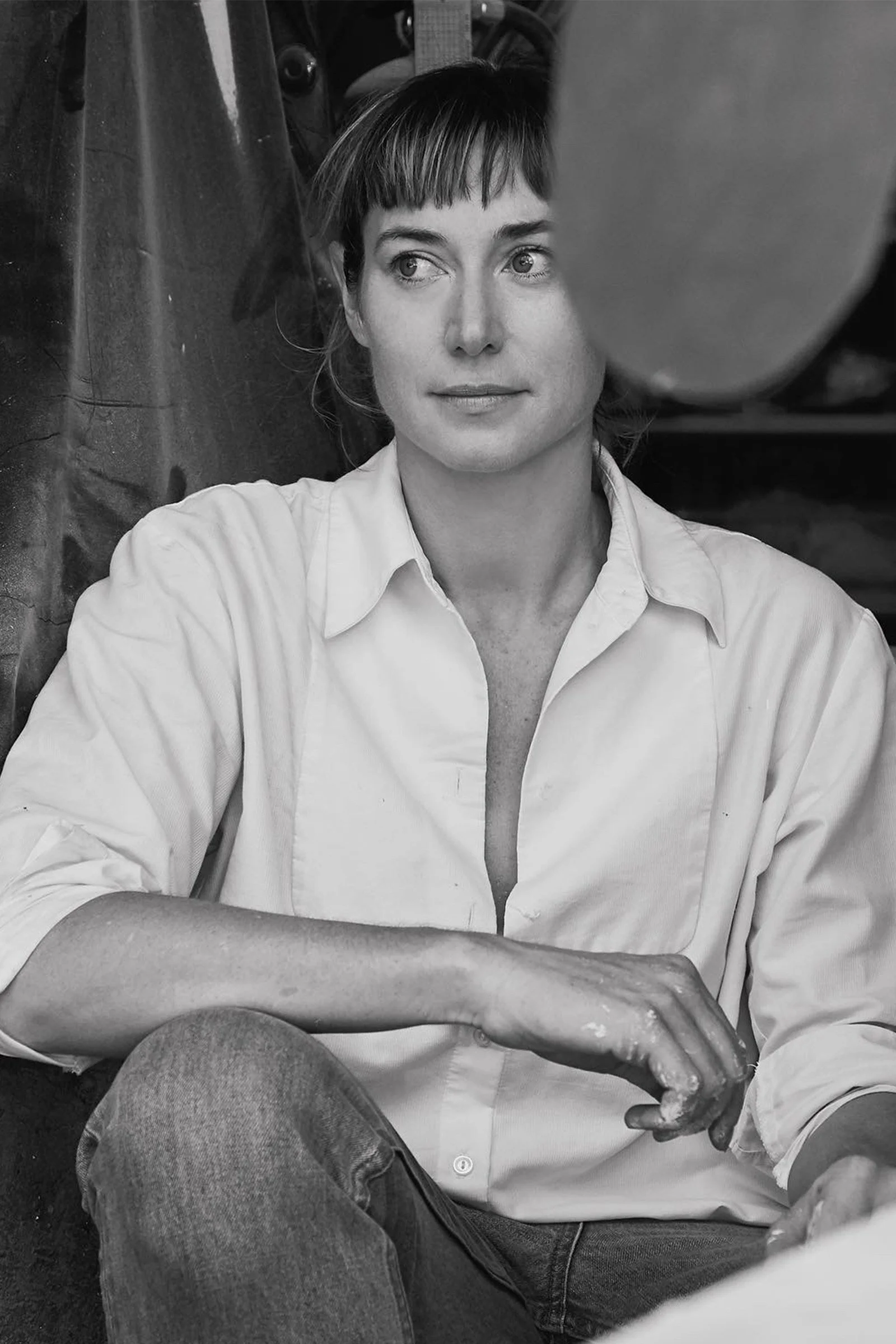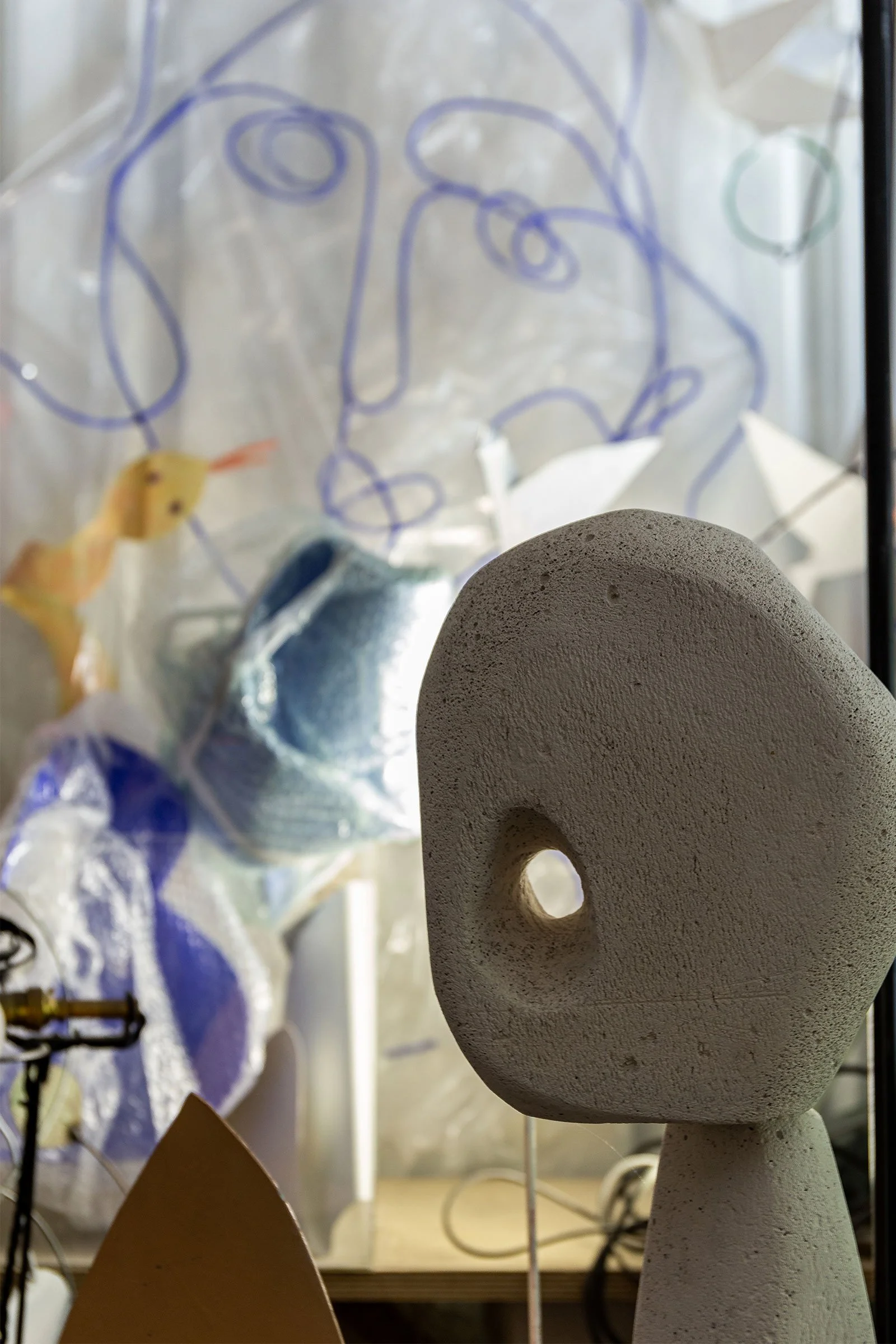Getting to Know Clementine Stoney Maconachie

The Sydney-based designer and maker explores the possibilities of metal and aerated concrete through her striking sculptures and experiments
Image by Mark Maconachie
Like many forced to re-evaluate their lives over the last few years, creative director Clementine Stoney Maconachie says the pandemic prompted her to pivot, shifting away from working in visual merchandising and event decoration through her creative agency The Visuals, which produces props for some of Australia’s biggest fashion brands. A friend had given Stoney Maconachie a crash course in welding and the two eventually went on to make furniture together, but when COVID-19 hit, she went out on her own and devoted herself to art. ‘I always had a love of sculpture but never considered it a permanent, viable career path,’ says Stoney Maconachie, who works out of a disused loading dock facility in Alexandria, Sydney.
Stoney Maconachie’s unusual technique involves using her own body weight as a tool to create irregular shapes from industrial materials. ‘There’s no heat involved, it’s all cold bent. It’s very physical work,’ she explains. While she always visualises an outcome before starting, nothing is sketched out beforehand. ‘I usually have a clear idea, but there isn’t necessarily a specific plan. Sometimes I just play with the materials and see what happens — it can be very meditative.’ The results are crumpled and folded forms made from steel, aluminium, brass and mixed zinc. Once the pieces are completed, she treats them all differently — some are left bare while others are powder coated or painted with a chalky finish.
Inspired by materials first and then form, Stoney Maconachie is now experimenting with Hebel — a high-performance aerated concrete used in building — to create totems, carving and hand-sanding individual pieces that are then stacked vertically. ‘I’m heavily inspired by tough materials and how I can turn them into organic shapes. I love steel, brass and all the metals, but I’m also very drawn to the aerated concrete I’m using at the moment,’ she says. ‘Sometimes my work is a very logical process, other times it’s abstract chaos.I don’t see steel as a hard, cold material like a lot of people do. Mostly, my work is about making hard materials appear soft, like paper. It’s not like the more traditional, harsher approach to steel, my version is more gentle and organic.’
Text / Carli Philips
Image by Claudia Smith
Image by Mark Maconachie
Image by Peter Van Alphen
Image by Clementine Stoney Maconachie
Image by Clementine Stoney Maconachie
Image by Peter Van Alphen
Image by Peter Van Alphen
Image by Clementine Stoney Maconachie
Image by Peter Van Alphen
Image by Clementine Stoney Maconachie
Image by Nikki To. Image of Ursula’s Paddington.


















